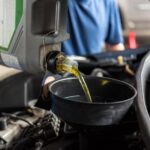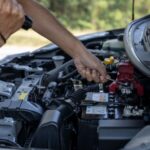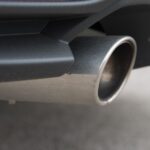Why your automotive dealership needs a mid-year inventory check up
A key part of managing an automotive dealership parts department is completing annual inventory counts. They verify that all inventory records have been correctly recorded during the year-end and tax filing seasons.
Regular counts throughout the year are a great way to improve management, find problem areas, and find ways of improving efficiency. Here are four good reasons to do a midyear inventory.
#1 – Cost Savings
Mid-year inventory counts can be a great way to identify issues in inventory management systems and reduce inventory shrinkage. They can highlight patterns that are more difficult after a year of transactions. It provides better data that will allow you to predict trends and turnover, which will decrease over-ordering and obsolescence and free up capital.
Although multiple inventory counts can improve the accuracy and timeliness of your records, you don’t have to do your inventory again after the end of the calendar year. That can translate into additional savings.
Because most auto dealers do their inventory counts at year’s end, inventory management companies have higher demand. In the middle part of the fiscal year inventory management companies have more time for customers and can offer discounted services.
#2 – Increasing your profitability
No matter when it is, a physical inventory count can increase your profitability. A count will ensure parts are properly accounted, values are assigned appropriately and your parts department is able to function effectively and efficiently. You will improve the productivity of your employer and your business by making sure that your on-shelf counts are in line with your computer counts.
#3 – Improved customer service
Customer frustration is only heightened when the work on their car takes longer than expected. There is a good chance that you have been in a situation when you promised to fix a customer’s car by a particular date.
You thought that all the parts required were available on your system. However, you later found out that one part was missing. Maybe it was misplaced, reused on another job, or not properly assigned. Your business will be more confident if your accounting and physical inventory are in sync.
#4 – Unload the parts before they are obsolete
Multiple times per year, you can review your inventory records and record to identify sales trends that could lead more obsolescence. This will allow you to sell the parts faster than there is demand.
This might include marketing and promotion to increase sales when you reopen, or reaching out and asking for help from other shops and service centres to determine if they have additional demand.
Additional Resource:
https://www.collinsdictionary.com/dictionary/english/automotive-parts
https://partsfan.com/
https://faiauto.com/






